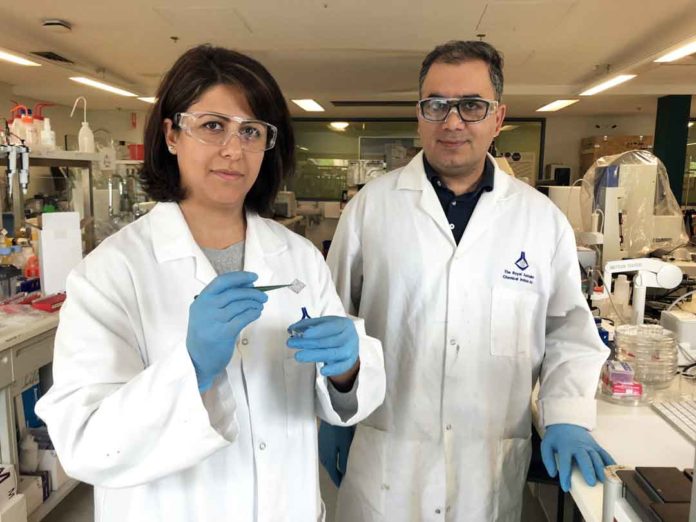In a new study, scientists at the RMIT University demonstrated a new method to double the graphene performance and finally harness its extraordinary potential.
Scientists primarily identified that graphene has not transformed electronics as promised. This is due to silicon contamination that acts as a barrier in producing higher performing, pure graphene.
To unlock full potential of supermaterial graphene, scientists inspected commercially available graphene samples, atom by atom, with a state-of-art scanning transition electron microscope.
Dr. Dorna Esrafilzadeh, study lead said, “We found high levels of silicon contamination in commercially available graphene, with massive impacts on the material’s performance. Testing showed that silicon present in natural graphite, the raw material used to make graphene, was not being fully removed when processed.”
“We believe this contamination is at the heart of many seemingly inconsistent reports on the properties of graphene and perhaps many other atomically thin two-dimensional (2-D) materials.”
“Graphene was billed as being transformative, but has so far failed to make a significant commercial impact, as have some similar 2-D nanomaterial. Now we know why it has not been performing as promised, and what needs to be done to harness its full potential.”
Along with identifying these impurities, scientists demonstrated the major influence they have on performance, with contaminated material performing up to 50% worse when tested as electrodes.
Esrafilzadeh said, “This level of inconsistency may have stymied the emergence of major industry applications for graphene-based systems. But it’s also preventing the development of regulatory frameworks governing the implementation of such layered nanomaterials, which are destined to become the backbone of next-generation devices.”
The two-dimensional property of graphene sheeting, which is only one atom thick, makes it ideal for electricity storage and new sensor technologies that rely on high surface area.
This study reveals how that 2-D property is also graphene’s Achilles’ heel, by making it so vulnerable to surface contamination, and underscores how important high purity graphite is for the production of more pure graphene.
Using pure graphene, researchers demonstrated how the material performed extraordinarily well when used to build a supercapacitator, a kind of super battery.
Esrafilzadeh said, “When tested, we found massive electrical charge. In fact, it was the biggest capacity so far recorded for graphene.”
The study is published in the journal Nature Communications.
